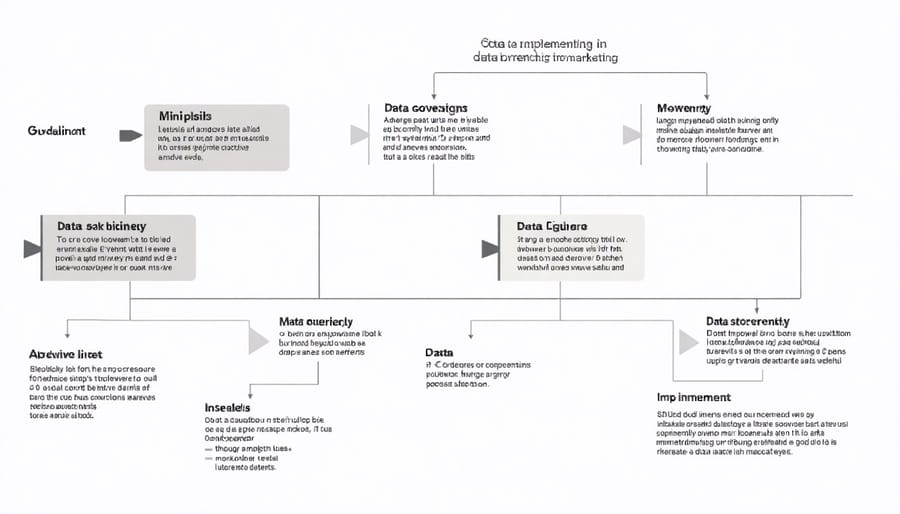Data Sovereignty: Why Your Marketing Data’s Location Actually Matters

Data sovereignty has emerged as a critical cornerstone of modern digital operations, fundamentally reshaping how businesses handle, store, and process information across borders. In an era where data flows freely through global networks, understanding and implementing data sovereignty principles has become non-negotiable for marketing professionals and business leaders alike.
This concept extends beyond mere data protection – it encompasses the complete authority and control over digital information within specific geographic boundaries, subject to the laws and governance structures of individual nations. For marketers and business operators, this translates into a complex web of compliance requirements, strategic decisions about data storage locations, and careful consideration of cross-border data transfer mechanisms.
As regulations like GDPR in Europe and various national data protection laws continue to evolve, mastering data sovereignty has become essential for maintaining competitive advantage while ensuring regulatory compliance. Organizations must now balance their global operational needs with increasingly stringent local data requirements, making this understanding crucial for modern business success.
What Is Data Sovereignty in Digital Marketing?

Key Components of Data Sovereignty
Data sovereignty comprises three fundamental components that businesses must understand to maintain compliance and protect their customer data effectively. The first critical element is data storage location, which determines where your data physically resides. This includes servers, data centers, and backup facilities, all of which must align with specific geographical requirements and local regulations.
The second component involves data processing activities, encompassing how and where data manipulation, analysis, and transformation occur. As data privacy in marketing becomes increasingly crucial, organizations must ensure that data processing adheres to the jurisdiction’s rules where the data originated.
Jurisdiction and regulatory compliance form the third essential component, defining which laws and regulations govern your data handling practices. This includes understanding which legal framework applies to your data operations, such as GDPR for European data or CCPA for California residents.
These components work together to create a comprehensive framework for data sovereignty:
– Storage locations must be carefully selected and documented
– Processing activities need to be tracked and controlled
– Jurisdictional requirements must be understood and followed
– Data flows between regions require proper documentation and controls
– Regular audits ensure ongoing compliance with local regulations
Understanding and implementing these key components helps businesses maintain control over their data while meeting their legal obligations and protecting customer privacy.
Data Sovereignty vs. Data Localization
While data sovereignty and data localization are often used interchangeably, they represent distinct concepts that impact marketing operations differently. Data sovereignty focuses on the laws and regulations governing data based on the country where it originates, emphasizing the legal jurisdiction over data management and processing. In contrast, data localization refers specifically to the requirement of storing data within a particular geographic boundary.
For marketers, understanding this distinction is crucial. Data sovereignty affects how you can use, process, and transfer customer data across borders, even if the data is stored elsewhere. This means complying with local data protection laws regardless of where your servers are located. Data localization, however, requires physical storage infrastructure within specific territories, directly impacting where you can host your marketing databases and customer information.
Consider email marketing campaigns: under data sovereignty rules, you must handle European customers’ data according to GDPR requirements regardless of your company’s location. With data localization, you might need to maintain separate email databases within specific countries or regions, potentially requiring multiple storage solutions.
For practical implementation, focus first on data sovereignty compliance through proper data handling procedures and consent management. Then, if necessary, address data localization requirements by establishing local storage solutions or partnering with compliant service providers in relevant territories.

Impact on Digital Marketing Operations
Compliance Requirements
Compliance with data sovereignty regulations requires organizations to adhere to specific legal frameworks that vary by jurisdiction. GDPR in the European Union mandates that EU citizens’ data must be processed within EU borders or in countries with adequate data protection measures. Similarly, China’s Personal Information Protection Law (PIPL) requires certain types of personal data to be stored within mainland China.
Organizations must implement robust data security protocols and maintain detailed documentation of data storage locations and processing activities. Key compliance requirements typically include:
• Data storage location transparency
• Regular data protection impact assessments
• Appointment of data protection officers
• Clear data transfer mechanisms
• Consent management systems
• Incident response procedures
For marketing operations, this means ensuring customer data collection, storage, and processing align with local regulations. Organizations must also maintain audit trails and be prepared for regulatory inspections. Non-compliance can result in significant penalties, with fines reaching up to €20 million or 4% of global annual revenue under GDPR.
Implementing Data Sovereignty in Your Marketing Strategy
To implement data sovereignty in your marketing strategy, start by auditing your current data collection and storage practices. Identify where your customer data resides and create a detailed map of data flows across different platforms and jurisdictions. Implement smart data collection practices that prioritize compliance with local regulations.
Consider these key action steps:
1. Choose local data centers and servers within relevant jurisdictions
2. Update privacy policies and terms of service to reflect data sovereignty compliance
3. Implement geo-fencing technology to restrict data movement
4. Train your marketing team on data handling protocols
5. Regularly audit third-party tools and services for compliance
Document your data processing activities and maintain clear records of consent. Establish a system for handling data access requests and ensure your marketing automation tools are configured to respect geographical restrictions. Create contingency plans for data transfers and consider working with local partners in key markets to maintain compliance while expanding globally.
Remember to regularly review and update these measures as regulations evolve and your business grows.

Data sovereignty has become an integral consideration in today’s digital business landscape, affecting how companies collect, store, and process customer data. As global regulations continue to evolve and consumers become more privacy-conscious, understanding and implementing data sovereignty principles is no longer optional but essential for business success. Companies that proactively adapt their data handling practices to comply with sovereignty requirements will be better positioned to build trust with customers and expand into new markets. Looking ahead, we can expect increased regulation around data sovereignty, particularly as digital transformation accelerates and cross-border data flows become more complex. Businesses should focus on developing flexible data management strategies that can adapt to changing requirements while maintaining operational efficiency and customer trust.
Leave a Reply